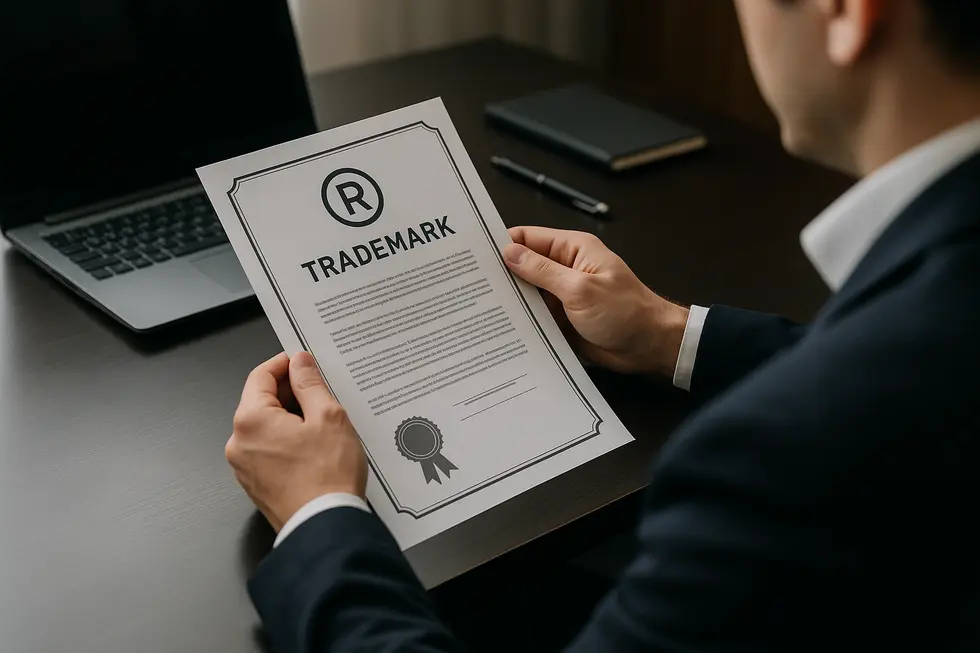导言
Establishing a brand in the United States requires an informed and strategic approach that goes beyond just choosing a name or logo. For business owners, creating a brand means carefully developing a clear identity, protecting it through appropriate legal channels, leveraging prominent online platforms like Amazon, and consistently maintaining its presence and protection over time. Each phase in this journey builds upon the previous, from understanding your market and crafting a compelling brand persona to securing legal trademark rights and employing expert support for growth. The steps covered here offer a full compass to navigate the complexities of brand creation in the USA, enabling businesses to stand out, protect their assets, and thrive.
目录
Chapter 1: Developing Brand Identity to Create Brand in USA
- Crafting a Strategic Brand Identity: Research, Core Values, and Unique Value Propositions for US Brands
- Crafting Unified Visual and Verbal Brand Elements That Deepen Consumer Trust in the USA
- Sustaining Authentic Brand Identity in the USA: Strategies for Customer Loyalty and Brand Integrity
Chapter 2: Legal Trademark Registration Strategies to Create Brand in USA
- Mastering Trademark Search and Distinctiveness for Effective Legal Protection in the USA
- Navigating Federal Trademark Filing and Compliance to Safeguard Your US Brand
- Sustaining Trademark Strength: Effective Post-Registration Maintenance and Infringement Monitoring for Brands in the USA
Chapter 3: Utilizing Amazon Brand Registry to Create Brand in USA
- Legal Foundations and Enrollment Process for Amazon Brand Registry Protection
- Strengthening Intellectual Property Defense and Eliminating Counterfeits with Amazon Brand Registry
- Maximizing Brand Growth and Protection with Amazon Brand Registry Features
Chapter 4: Professional Branding Agency Role in Helping Create Brand in USA
- How Professional Branding Agencies Drive Strategic Brand Development in the USA
- Crafting Cohesive Visual Identities and Messaging Strategies with Professional Branding Agencies
- Strategic Market Positioning and Trust Building: How Branding Agencies Elevate US Brands
Chapter 5: Ongoing Brand Maintenance and Protection to Create Brand in USA
- Navigating Trademark Registration and Renewal Laws for Lifelong Brand Protection in the USA
- Balancing Consistency and Flexibility: Strategic Brand Management in the US Market
- Strengthening Your Digital Brand Presence: Utilizing Amazon Brand Registry in U.S. Market Protection
Chapter 1: Developing Brand Identity to Create Brand in USA

1. Crafting a Strategic Brand Identity: Research, Core Values, and Unique Value Propositions for US Brands
Crafting a compelling brand identity in the USA begins with defining your brand’s core values and mission. These elements form the foundation that guides every aspect of your brand’s presence. Clearly articulating what your brand stands for, how it addresses customer needs, and the qualities that distinguish it ensures authenticity and builds trust. This clarity should influence your messaging, designs, and customer interactions to establish a consistent and meaningful personality that resonates in the competitive US market.
A deep understanding of your target audience and competitors is essential. Comprehensive market research uncovers customer behaviors, preferences, and pain points through surveys or interviews, allowing you to segment audiences effectively. This insight helps position your brand strategically, highlighting strengths and gaps that your brand can fill. Awareness of competitor positioning further sharpens your unique appeal, enabling you to carve a niche with precision.
Setting precise business and marketing goals aligned with your mission directs your branding efforts. Whether aiming to boost brand recognition, enhance loyalty, or differentiate clearly from rivals, these objectives ensure your strategy remains focused and purposeful. These goals also calibrate marketing campaigns to build brand equity steadily.
The unique value proposition (UVP) is the cornerstone that communicates what makes your brand distinctive and valuable. It could emphasize product innovation, exceptional customer experience, sustainability, or mission-driven commitments. Your UVP must be woven seamlessly into your brand story, consistently communicated across all channels to foster emotional connections and long-term loyalty.
Finally, all elements—visual identity, tone of voice, and messaging—should reflect your defined values and UVP harmoniously. Consistency is key to reinforce recognition and trust across all consumer touchpoints. Vigilant monitoring and flexible adaptation of your brand identity ensure it stays relevant as market dynamics and customer expectations evolve.
For guidance on naming and crafting persuasive brand communication that supports your brand identity, explore effective strategies at copywriting brand name.
Additional legal and strategic details about trademark registration can be found at the USPTO website.
2. Crafting Unified Visual and Verbal Brand Elements That Deepen Consumer Trust in the USA
Building a cohesive visual and verbal brand identity is essential to forge meaningful connections with consumers across the diverse American market. A successful brand identity begins by defining core values and mission statements that clearly articulate what the brand stands for and how it seeks to influence customer perception and emotion. These foundational ideas shape every visual cue and message tone, ensuring the brand’s essence resonates authentically.
Visual identity anchors this connection through carefully crafted elements: a unique and versatile logo that is recognizable at a glance, a color palette chosen to evoke specific feelings—given that colors can increase brand recognition by up to 80%—and typography selected to communicate the brand’s personality clearly and consistently. The imagery and iconography complement the story and enhance memorability, supporting an overall aesthetic that feels both genuine and professional.
Alongside visual identity, establishing a precise verbal identity guides the tone of communications, from casual friendliness to formal authority, aligning every message with the brand’s character. These verbal rules ensure consistency in storytelling across websites, social media, packaging, and advertising, fostering trust and loyalty.
To maintain these standards, compiling all branding elements and usage guidelines into an accessible and detailed style guide is vital. This document serves as the definitive reference for internal teams and external partners alike, describing correct logo placement, color application, typography hierarchies, imagery style, grammar norms, and tone of voice. Regular audits and updates keep the brand relevant and true to its vision as market conditions and consumer preferences evolve.
In the US, where authenticity and trust heavily influence buying decisions, this disciplined approach to brand identity design not only enhances recall but can substantially increase revenue and loyalty. Assigning responsibility for the ongoing stewardship of these guidelines ensures the brand’s honesty and distinctiveness remain intact.
For deeper insight into structuring effective brand guidelines, this resource on brand guidelines offers a comprehensive overview.
3. Sustaining Authentic Brand Identity in the USA: Strategies for Customer Loyalty and Brand Integrity
Sustaining a genuine brand identity is essential for long-term customer loyalty and market relevance in the USA. This requires a focused, consistent approach aligned deeply with the brand’s core values and clearly communicated across all touchpoints. Establishing specific brand goals rooted in your mission and value proposition provides the necessary foundation. These goals clarify what your brand stands for and drive every decision to maintain authenticity in the marketplace.
Performing periodic brand audits and market research offers critical insight into how your brand is perceived relative to competitors and customer expectations. These evaluations help identify opportunities to enhance your messaging and visual identity so they resonate more clearly with your intended audience. Consistent use of logos, colors, and tone across digital platforms, packaging, and communications reinforces brand recognition and bolsters credibility.
Internal alignment across teams ensures the brand’s vision and values are passionately embodied by employees, fostering authentic customer interactions. Equally important is defining and deeply understanding your target audience’s demographics and psychographics, allowing you to tailor messaging that builds trust and emotional connection over time.
Continuous monitoring through customer feedback and marketing analytics supports agile brand management. Brands that listen and respond actively to their audience maintain relevance and adapt effectively to changing preferences, ensuring sustained loyalty.
A brand that consistently reflects its true character while evolving based on authentic customer insights builds lasting emotional bonds. This delicate balance underpins a strong brand identity that not only attracts but retains loyal customers.
For comprehensive guidance on brand management strategies, explore Frontify on Brand Management Strategy.
Chapter 2: Legal Trademark Registration Strategies to Create Brand in USA

1. Mastering Trademark Search and Distinctiveness for Effective Legal Protection in the USA
An essential foundation of legal trademark registration in the USA is conducting a meticulous trademark search combined with ensuring the mark’s distinctiveness. Before filing an application with the United States Patent and Trademark Office (USPTO), it is critical to examine the existing landscape for any similar marks that might create confusion. This involves searching multiple dimensions—visual appearance, spelling, sound, and overall commercial impression—since even subtle likenesses can trigger refusal under the Lanham Act’s likelihood of confusion standard. A thorough search minimizes costly application denials and potential infringement disputes.
Distinctiveness is equally vital: trademarks fall along a spectrum from generic, which cannot be protected, through descriptive, suggestive, arbitrary, and fanciful, with the last two categories offering the strongest legal safeguards. Selecting a mark that is arbitrary or fanciful—a word or design unrelated to the underlying product—maximizes registration approval chances and long-term enforceability. Marks that initially seem descriptive may gain “acquired distinctiveness” after consistent commercial use, but this route can be riskier and lengthen the process.
Once the USPTO application is submitted, an examining attorney reviews it for conflicts and proper form. If conflicts arise, applicants must respond promptly to address refusals. Upon tentative approval, a period of public opposition follows before final registration, a journey that often spans 8 to 18 months.
Successfully registering a distinctive trademark secures exclusive rights that distinguish your brand in a competitive market, deterring unauthorized use and adding value to your business. Such protections are invaluable for differentiating your offerings and safeguarding your investment in brand equity.
For deeper insights on trademark fundamentals and intellectual property protections crucial in brand creation, explore this comprehensive guide to trademarks and intellectual property.
Further details on the federal trademark registration process can be found at the official USPTO website: https://www.uspto.gov/trademarks.
2. Navigating Federal Trademark Filing and Compliance to Safeguard Your US Brand
Securing a trademark in the United States demands a deliberate approach centered on federal filing and strict legal compliance. The process starts with a thorough trademark search to confirm your brand’s distinctive mark does not conflict with existing registrations in your product or service category. Meeting the U.S. Patent and Trademark Office (USPTO) requirements is essential: your trademark must be distinctive and lawfully used in commerce or submitted under an “Intent to Use” basis if you have not yet begun commercial use.
Filing the application online through the USPTO Trademark Center streamlines submission and typically costs around $350 for each class of goods or services. Applications must be accompanied by a clear specimen demonstrating the trademark’s actual commercial use—electronic or photographic evidence that aligns with the selected classification. Throughout the examination, maintaining legal compliance involves promptly responding to USPTO communications, including office actions that may raise objections or require clarifications.
Successful registration on the Principal Register confers powerful legal advantages. Your brand gains federal protection nationwide, enabling enforcement through federal courts without jurisdictional limits. The trademark owner can pursue statutory damages and legal fees if infringement is willful, while customs enforcement mechanisms help block counterfeit imports. Moreover, registration strengthens claims internationally through treaties such as the Madrid Protocol.
Alternatively, state trademark registrations provide localized protection, which is quicker and less expensive but lacks the breadth and legal strength of federal registration. Therefore, federal filing remains the cornerstone for serious brand creation in the U.S., providing comprehensive safeguards vital to establishing and defending your brand identity.
For more detailed guidance on the filing process and compliance essentials, consult official resources available on the USPTO website. Additionally, exploring expert advice in brand trade name guide can enhance your application and protection strategies.
External resource: https://sell.amazon.com/blog/brand-registry-requirements
3. Sustaining Trademark Strength: Effective Post-Registration Maintenance and Infringement Monitoring for Brands in the USA
Securing a trademark registration in the USA is only the beginning of a brand’s legal protection journey. To ensure that a brand retains exclusive rights and robust protection, consistent post-registration maintenance and vigilant infringement monitoring are essential. Trademark owners must file specific maintenance documents with the United States Patent and Trademark Office (USPTO) within prescribed timelines. Notably, the Section 8 Declaration of Continued Use must be filed between the fifth and sixth year after registration to confirm ongoing commercial use. Subsequently, a Combined Section 8 and Section 9 Renewal is required between the ninth and tenth year, and every ten years thereafter, to renew the trademark registration. Failure to meet these deadlines or discontinuing trademark use for about three years can lead to abandonment, which effectively nullifies the trademark’s legal rights.
Beyond paperwork, safeguarding a trademark demands ongoing market surveillance to detect unauthorized or confusingly similar uses that could dilute or infringe upon the brand. This surveillance can involve manual efforts, such as regular searches on online marketplaces, social media, and competitor platforms, or deployment of automated monitoring tools—including the USPTO’s Trademark Status & Document Retrieval (TSDR) system and specialized third-party watch services. These mechanisms help identify potential conflicts involving business registrations, domain names, and website content.
When infringement is detected, timely enforcement actions are critical. Issuing cease and desist letters or pursuing legal remedies preserves the brand’s exclusivity and deters further violations. This vigilant approach not only sustains the trademark’s legal standing but also reinforces the brand’s market integrity in a competitive environment.
Maintaining a trademark’s vitality through deliberate filings, continuous commerce use, and proactive infringement monitoring forms a foundational part of brand strategy in the USA. For further insights into protecting intellectual property rights relevant to trademarks, exploring detailed resources on copyrights and trademarks can enhance brand owners’ understanding. Comprehensive guidelines on these post-registration practices are also available at the USPTO’s official site: https://www.uspto.gov/trademarks-maintaining-trademark-registration.
Chapter 3: Utilizing Amazon Brand Registry to Create Brand in USA

1. Legal Foundations and Enrollment Process for Amazon Brand Registry Protection
Achieving strong brand protection on Amazon begins with meeting specific legal criteria and following a clear enrollment process. Central to this is securing a trademark that uniquely identifies your brand, either as a text-based or a design mark incorporating words or numbers. This trademark must be federally registered or have a pending registration with the United States Patent and Trademark Office (USPTO). Although trademark registration can take from 12 up to 18 months due to review complexities, it forms the essential legal backbone required for Amazon Brand Registry enrollment.
Once you hold or have applied for such a trademark, enrolling in the Amazon Brand Registry involves submitting precise details through an active Amazon seller account. You must provide the brand name, trademark registration number, and trademark office information, alongside clear images of your branded products or packaging. These visuals confirm to Amazon that your brand is actively used in commerce and aligns with the trademark under review. Amazon then performs a verification step, which may include contacting the trademark office or sending a verification code to the registered trademark owner, assuring legitimate brand ownership.
Upon successful verification, the application undergoes an approval period lasting several days to a few weeks. Once approved, brands gain access to advanced tools designed to deter counterfeit sales and unauthorized sellers, reinforcing customer trust by certifying authenticity. This enrollment also integrates smoothly with supplementary Amazon protections, enhancing your brand’s control and intellectual property enforcement on the platform. It is crucial to provide accurate and complete information during this process, as errors can delay approval.
For businesses navigating trademark complexities during this journey, understanding the distinctions between trademark types and requirements is key. In-depth insights into trademark intellectual property rights can further guide brand owners in establishing solid legal foundations.
Learn more about trademark basics and protections from this detailed resource on copyrights, trademarks, and intellectual property.
More details on Amazon Brand Registry legal requirements can be found at Amazon’s official site: https://accelerateip.com/amazon-brand-registry-your-shield-against-counterfeiters-and-brand-hijackers/
2. Strengthening Intellectual Property Defense and Eliminating Counterfeits with Amazon Brand Registry
Amazon Brand Registry serves as a powerful platform for brand owners looking to safeguard their intellectual property and eliminate counterfeit goods on Amazon’s marketplace. Central to enrolling in this program is possessing an active, federally registered trademark with the United States Patent and Trademark Office (USPTO). The trademark must exactly match the brand name used on products or packaging, including both text-based and design marks, ensuring legal recognition before gaining access to the Registry’s tools.
Once registered, brands gain authoritative control over their product listings. This control prevents unauthorized changes to content such as titles, descriptions, and images, preserving consistent and accurate brand messaging. Additionally, Amazon employs advanced machine learning technology to detect suspicious listings and counterfeit activity proactively. Brand owners benefit from a dedicated “Report a Violation” dashboard, enabling swift reporting and removal of infringing items. Enhanced features like unique product codes through Transparency and Project Zero’s self-removal capabilities further empower brands to combat counterfeits independently.
Importantly, protection extends across Amazon’s global marketplaces, enabling automatic exclusion of infringing listings in multiple countries. The system continuously evolves by learning from reported violations, providing dynamic and ongoing defense against intellectual property abuse.
Beyond protection, Amazon Brand Registry unlocks enhanced marketing opportunities including A+ Content for richer product descriptions, Amazon Stores for customized brand pages, and Sponsored Brands advertising. These features help establish brand credibility and deepen customer trust in the competitive U.S. market.
For brands initiating the trademark process, Amazon offers IP Accelerator services to connect them with vetted legal counsel, expediting access to these benefits. Overall, leveraging Amazon Brand Registry is indispensable for brands aiming to build and protect a trustworthy presence on this influential platform.
For further guidance on trademark acquisition and Brand Registry enrollment, consult the official USPTO resources and Amazon’s Brand Registry portal. Additionally, understanding the nuances of intellectual property rights can enhance brand protection strategy—explore detailed insights at characteristics of copyright law.
3. Maximizing Brand Growth and Protection with Amazon Brand Registry Features
Amazon Brand Registry offers a robust platform for brands in the USA to solidify their presence and safeguard their intellectual property on one of the world’s largest marketplaces. By enrolling, brand owners gain authoritative control over product listings, which ensures that crucial elements such as titles, images, and descriptions remain consistent and true to the brand’s identity. This control not only prevents unauthorized edits by third-party sellers but also enhances consumer trust by delivering a reliable shopping experience.
Beyond maintaining listing integrity, Brand Registry employs advanced machine learning tools to detect and swiftly remove counterfeit or infringing products. Features like Report a Violation, Project Zero, and Transparency empower brands to actively combat counterfeiting, a significant concern for sellers looking to protect their reputation and revenue.
Marketing capabilities are a key advantage, with access to enhanced content creation tools such as A+ Content, where rich images, detailed descriptions, and videos can be added to listings. This elevates product pages, increasing buyer engagement and conversion rates. Furthermore, brands can build customized Amazon Stores that serve as immersive brand destinations, alongside leveraging advertising solutions like Sponsored Brand Ads and Amazon Live for targeted promotions.
Data-driven insights harvested from Brand Registry analytics enable businesses to refine their marketing strategies by understanding customer behavior and product performance in-depth. The 2025 introduction of Brand Catalog Lock further strengthens protection by restricting listing edits to authorized representatives only, reinforcing authenticity and preventing unauthorized listing changes.
For brands expanding internationally, the registry’s protection seamlessly extends across global Amazon marketplaces, ensuring consistent enforcement and guarding against counterfeit listings worldwide. These curated tools ultimately create a trustworthy and dynamic environment for brand growth, helping new and established businesses scale effectively.
For further guidance on effective trademark use to protect your brand’s position on Amazon and beyond, consider exploring key resources on trademark and intellectual property.
More detailed enrollment information and updates on powerful Brand Registry features can be found at https://www.edesk.com/blog/amazon-brand-registry-2025/
Chapter 4: Professional Branding Agency Role in Helping Create Brand in USA

1. How Professional Branding Agencies Drive Strategic Brand Development in the USA
A professional branding agency in the USA plays an essential role in guiding businesses through strategic brand development, a process that is comprehensive and tailored to align brand identity with business objectives and market realities. This starts with an in-depth discovery phase where the agency immerses itself in understanding the client’s industry landscape, target audience behaviors, and competitor environment. Through collaborative workshops and research, the agency unearths the unique essence of the brand and pinpoints growth opportunities.
Building on these insights, agencies formulate a clear market positioning by analyzing trends and defining core elements like the brand’s purpose, values, and mission. This strategic blueprint sets the tone for consistent messaging and effective communication across platforms. The next critical step is the design of the brand’s visual identity—including logos, typography, color schemes, and digital assets—that encapsulate the brand’s personality and story, creating a compelling and recognizable presence.
Beyond design, agencies develop detailed brand guidelines to ensure consistency in how the brand is presented across websites, packaging, social media, and marketing materials. This cohesive approach strengthens brand recognition and trust among consumers. After launch, the agency continues to monitor the brand’s performance, leveraging data and feedback to refine strategies and maintain relevance in a dynamic marketplace.
In the competitive US market, professional branding agencies do more than create logos; they shape holistic brand experiences that drive customer loyalty and business growth. Their expertise helps businesses—from startups to established enterprises—navigate complex branding challenges, ensuring long-term alignment between brand identity and evolving consumer expectations.
For deeper insight into trademark considerations integral to brand strategy, exploring resources like the Brand and Trademark Guide can be invaluable. Further details on agency roles and services can be found through agencies’ official insights pages.
2. Crafting Cohesive Visual Identities and Messaging Strategies with Professional Branding Agencies
Professional branding agencies in the USA play an indispensable role in transforming a business’s core essence into compelling visual and verbal expressions. This process begins with deep discovery, where agencies immerse themselves in understanding the company’s mission, values, target customers, and market dynamics through extensive research and workshops. This foundation shapes every creative and strategic decision, ensuring the brand identity truly reflects its unique positioning.
The agencies then develop a brand strategy that defines how the brand speaks and appears consistently across all touchpoints. This encompasses carefully crafted messaging that conveys the brand’s values and unique value proposition in an authentic, relatable way. They align tone, voice, and messaging across platforms to foster emotional connections and clear communication.
Simultaneously, they create the visual identity components—logos, color schemes, typography, and other design elements—that together form a recognizable brand personality. These visual assets are designed for versatility, maintaining cohesion whether on digital channels, packaging, or print materials. Consistency in these elements reinforces brand recall and trust among consumers.
A professional agency often provides detailed brand guidelines and ongoing support, helping businesses maintain brand integrity as they expand. This holistic approach is crucial for emerging brands aiming to distinguish themselves in competitive American markets. For example, an agency’s integrated strategy for a client included logo design, packaging, and web presence, all echoing the client’s values and target demographic, achieving strong market positioning.
For a broader view on the impact and methods of top branding agencies in the USA, see this DesignRush page on leading branding agencies.
To safeguard the crafted brand messaging and name, understanding trademark protections is equally important, and further insights can be found in this guide on copywriting and brand name protection.
3. Strategic Market Positioning and Trust Building: How Branding Agencies Elevate US Brands
Professional branding agencies play a pivotal role in shaping a brand’s market presence by weaving together strategic positioning and trustworthy consumer engagement. Their approach begins with extensive market research to gain deep insights into the target audience, competitors, and evolving trends within the US marketplace. This discovery phase lays the groundwork for crafting a precise brand strategy that aligns the company’s mission, core values, and unique value proposition with the demands and expectations of its ideal customer base.
Armed with these insights, branding professionals develop clear, focused positioning statements that highlight what distinguishes the brand. This differentiation is key to capturing attention and fostering meaningful connections. Effective positioning ensures that the brand’s messaging resonates authentically, emphasizing relevance to consumer needs and desires.
Equally important is consistent communication across all consumer touchpoints—from websites and social media to emails and advertisements. Agencies carefully maintain a uniform tone and voice that mirrors the brand’s personality, strengthening brand recognition while cultivating consumer trust. Trust emerges naturally when customers consistently encounter clear, honest, and relevant messaging tailored to their preferences.
Visual identity further reinforces trust and recognition. Branding agencies design logos, select color schemes, and define style guides that visually express the brand’s essence. This cohesion between visual and verbal identity fosters a memorable experience that signals professionalism and reliability in the eyes of consumers.
Continuous monitoring allows agencies to adjust strategies responsively to market feedback and changing consumer behavior, ensuring the brand stays relevant and trusted over time. Through this comprehensive and data-driven process, branding agencies transform businesses into competitive, respected brands with lasting consumer loyalty.
For more on crafting compelling brand messaging that supports strong trademarks, explore thoughtful approaches to brand naming and messaging at copywriting brand name insights.
Learn more about the structured multi-phase approach that enables agencies to deliver these outcomes at DesignRush professional branding agencies overview.
Chapter 5: Ongoing Brand Maintenance and Protection to Create Brand in USA

1. Navigating Trademark Registration and Renewal Laws for Lifelong Brand Protection in the USA
Establishing and sustaining a brand in the USA hinges critically on federal trademark registration through the United States Patent and Trademark Office (USPTO). This legal framework grants nationwide rights, offering protection well beyond localized common law benefits. The registration process generally takes six to nine months, involving a detailed examination, a 30-day public opposition window, and eventual approval if all requirements are met. Filing electronically costs around $350 per classification of goods or services, with additional fees for legal representation or specialized services.
After securing registration, a brand owner must actively maintain their trademark to prevent cancellation. Between the fifth and sixth year following registration, a Declaration of Continued Use must be filed, demonstrating the mark’s ongoing application in commerce. Neglecting this requirement results in automatic loss of trademark rights. Subsequently, combined renewal filings are required every ten years, accompanied by proof of use such as labels or promotional materials. The USPTO demands consistent, verifiable use of the trademark to uphold its validity; prolonged non-use can lead to abandonment.
Protection extends beyond registration to vigilant enforcement against infringement. Brand owners bear the responsibility of monitoring unauthorized or similar marks that might cause consumer confusion or dilute their brand equity. Legal measures, including cease and desist notifications or lawsuits, are often essential to defend trademark rights effectively.
While state-level trademarks exist, their protection is confined strictly within state borders and is generally less robust than federal registration. For comprehensive national brand security, federal registration remains paramount.
Proper understanding of these legal mechanisms and timely compliance ensures a brand’s longevity and market exclusivity in the competitive US landscape. For a deeper exploration of trademark registration procedures and maintenance, visit USPTO’s official guidance. For practical advice on securing your brand, see this brand and trademark resource.
2. Balancing Consistency and Flexibility: Strategic Brand Management in the US Market
Balancing Consistency and Flexibility: Strategic Brand Management in the US Market
Maintaining and protecting a brand in the USA demands a strategic blend of consistent presentation and adaptive evolution. Consistency fosters recognition and trust by ensuring all brand expressions—visuals, language, and customer experiences—remain unified across diverse platforms and touchpoints. This stability anchors the brand’s reputation and builds consumer confidence over time.
Simultaneously, adaptability is essential for responding effectively to shifting market dynamics and evolving consumer preferences. Brands must routinely assess their positioning and identity, using tools like brand audits and competitive analysis. These evaluations uncover growth opportunities and potential vulnerabilities, guiding necessary realignments without compromising the core essence of the brand.
Establishing clear brand goals provides a compass for these ongoing efforts, enabling measurement of progress and prioritization of initiatives. Developing robust brand guidelines helps enforce consistency, defining rules around logo usage, color palettes, tone, and messaging to preserve brand integrity at scale. Equipping internal teams and external partners with governance resources—such as training, brand portals, and audit frameworks—ensures everyone champions the brand purpose confidently and cohesively.
In the US’s diverse and competitive environment, scalable brand systems prove invaluable. They allow brands to tailor messaging or visuals for different products or regional audiences while upholding fundamental identity elements. Continuous monitoring for legal infringements and market shifts is critical to protect intellectual property and to refresh the brand’s offerings or communications proactively.
This dynamic balance of consistency and flexibility secures a brand’s relevance and strength. By committing to clear objectives, rigorous brand management, and organizational alignment, businesses can sustain lasting brand equity in the USA.
For further insight on implementing strategic brand governance, the Frontify brand management framework is a noteworthy resource.
Additionally, comprehensive trademark protection underpins this strategy and ensures the brand’s exclusivity in the marketplace. Learn more about the nuances of trademark versus copyright protection in branding at trademark versus copyright examples.
3. Strengthening Your Digital Brand Presence: Utilizing Amazon Brand Registry in U.S. Market Protection
Establishing a strong brand in the digital marketplace requires vigilant protection and strategic leveraging of specialized tools, with Amazon Brand Registry playing a pivotal role for brands operating in the U.S. Amazon Brand Registry empowers brand owners by providing enhanced control over product listings, guarding against counterfeit products, and offering exclusive marketing capabilities. However, accessing these benefits hinges on securing a federal trademark registration from the United States Patent and Trademark Office (USPTO) or having a pending application that precisely matches the brand name used on products or packaging. This trademark foundation is crucial not only for enrollment but also for enforcing intellectual property rights nationwide.
Once registered, the Brand Registry equips businesses with the ability to present their products authentically and consistently, minimizing risks posed by unauthorized sellers or brand hijackers. Additionally, premium marketing tools, such as enhanced brand content and Sponsored Brands advertisements, help brands engage customers more effectively and elevate their market presence. Maintaining trademark registrations through timely renewals and documented commercial use ensures legal protections remain enforceable, supporting ongoing efforts to monitor and address infringements.
Legal presumptions linked with federal trademark registration facilitate swift action against IP violations both on the Amazon platform and in court, underscoring the value of a distinctive brand mark. For brand owners, partnering with intellectual property specialists can streamline navigation through trademark applications, Amazon enrollment, and enforcement strategies while preserving brand integrity.
For deeper insights into trademark and intellectual property protection essential to brand security in the marketplace, consult resources on copyrights, trademarks, and intellectual property.
More information on Amazon Brand Registry requirements is available at Amazon’s official Brand Registry.
最后的想法
Building a successful brand in the USA requires a thorough and integrated approach that addresses every phase—from crafting a unique brand identity to securing legal protections and maintaining consistent presence in the marketplace. Understanding trademark registration options ensures your brand is protected nationwide while utilizing platforms like Amazon Brand Registry fortifies your online market position. Partnering with professional branding agencies speeds and strengthens brand development, while ongoing brand maintenance preserves your investment over time. Business owners who follow this comprehensive roadmap gain the tools and knowledge necessary to create, protect, and grow a recognized and valuable brand in one of the world’s most competitive markets.
今天就申请商标!成千上万的人通过申请商标保护了自己的品牌。您还在等什么?开始申请商标吧!
关于我们
The globe’s top website for registering trademarks and safeguarding your brand, name, logo, or slogan. We provide comprehensive legal support, expert guidance, and streamlined application processes to help business owners protect their most valuable assets and build lasting brand equity.







